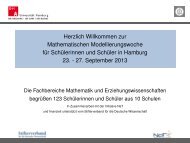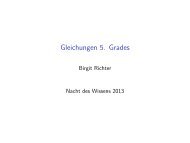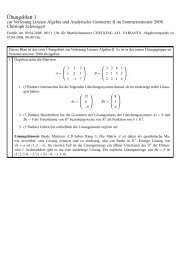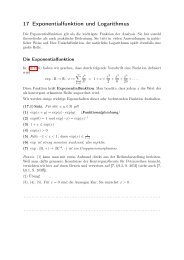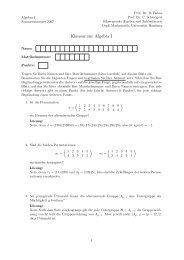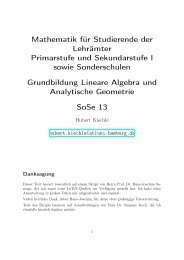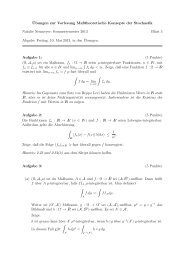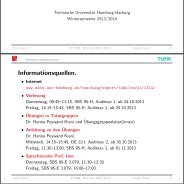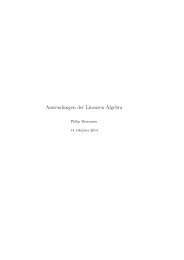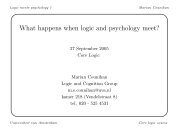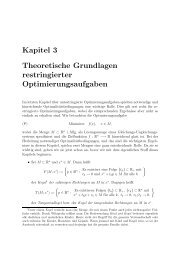pdf file
pdf file
pdf file
You also want an ePaper? Increase the reach of your titles
YUMPU automatically turns print PDFs into web optimized ePapers that Google loves.
– Objects are oriented triangulated closed one-dimensional manifolds. Thus objects<br />
are disjoint unions of circles with a finite number n of marked points. Examples of<br />
objects are thus oriented standard circles S 1 ⊂ C with n marked points at roots of<br />
unity and inherited orientations for the intervals. We suppress the latter information.<br />
– Morphisms are two-dimensional, oriented triangulated manifolds with boundary, up<br />
to equivalence which preserves the boundary triangulation, but not necessarily the<br />
triangulation in the interior. More precisely, we have orientation and triangulation<br />
preserving smooth maps<br />
φ B :<br />
M × [0, ɛ) ∐ N × [0, ɛ) → ∂B<br />
that parametrize a small neighborhood of the boundary respecting triangulations.<br />
– Since we can find triangulated cylinders relating the circles S 1 n and S 1 m for all n, m ∈<br />
Z, which are mutually inverses, we still have one isomorphism class of objects.<br />
There is an obvious monoidal functor<br />
Cob tr (2) → Cob(2)<br />
which forgets the triangulation. It turns out that this functor is full and essentially surjective:<br />
any one-dimensional and two-dimensional smooth manifold admits a triangulation.<br />
It is also faithful and thus an equivalence of categories.<br />
• We now construct a two-dimensional topological field theory that is even more local than<br />
our previous construction: we start by associating vector spaces to the objects S 1 n. Our<br />
first input datum is thus<br />
– A K-vector space V . We assume, for simplicity, from the very beginning that this<br />
vector space is finite-dimensional.<br />
Tentatively, we assign to a circle S 1 n with n (positively oriented) intervals the vector space<br />
˜Z tr (S 1 n) := V ⊗n .<br />
This cannot possibly be the true value of our functor Z tr since the latter has to assign<br />
isomorphic vector spaces to the isomorphic objects S 1 n.<br />
• We next have to construct linear maps for triangulated cobordisms. We keep the idea<br />
that we should assign the same vector space V to one-dimensional structures, i.e. to all<br />
intervals, and thus to edges of the triangulation. We have the idea that we build up the<br />
surface by gluing triangles and thus by identifying edges of different triangles. For this<br />
reason, we assign a copy of V to each positively oriented pair (triangle, edge).<br />
We now need to get rid of all vector spaces associated to inner edges. They appear twice,<br />
with opposite relative orientation. Finally, we need to make disappear the triangles. This<br />
leads to the following data:<br />
– A non-degenerate symmetric bilinear pairing μ : V ⊗ V → K.<br />
– A tensor t ∈ V ⊗ V ⊗ V that is invariant under the natural action of the group Z 3<br />
of cyclic permutations on V ⊗3 .<br />
91




